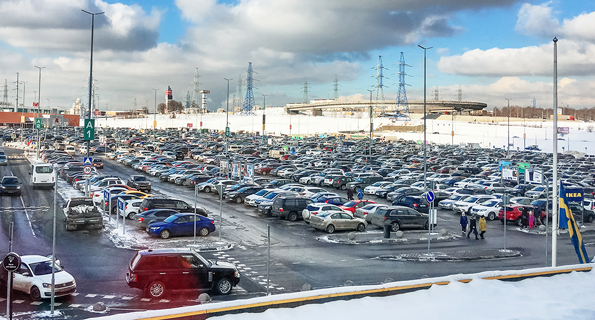|
May 23, 2019 Is cyber-shopping terrible for the environment?
Some say yes, with all those trucks heading out into suburbia to deliver your latest gadget, fashion garment or book. But online retailers insist theirs is the greener delivery route — much better than you driving to the store.
So, who is right? And are there even better ways?
This really matters for the climate. Online shopping makes up one in seven retail purchases worldwide. Its value in 2019 will be a staggering US$3.5 trillion, a figure that is rising by more than a fifth every year.
How much of the total carbon footprint of what you buy is attributable to delivery varies hugely. But wherever your latest purchase comes from — whether a Chinese factory or a field in your home state — transport from the store or warehouse to home likely dominates the delivery footprint, says Alan McKinnon, a professor of logistics at the Kühne Logistics University in Hamburg, Germany, and author of a new book Decarbonizing Logistics.
What logistics folks call the “last mile” is usually the most energy-intensive stage, McKinnon and colleague Julia Edwards have pointed out, “and typically generates more CO2 emissions than all the upstream logistical activities.”
 Crowded parking lots suggest in-person shopping has a massive carbon footprint — but the devil is in the details. Photo © iStockphoto.com/Konstantin Aksenov
It is also where the difference between online and in-store shopping is greatest — and McKinnon says most times delivery is best. A typical home delivery round of online purchases in Britain consists of 120 drops on a 50-mile (80 kilometer) round. That round produces some 50 pounds (20 kilograms) of CO2, or just over 6 ounces (170 grams) per individual delivery. If you went to the store, the typical drive would be around 13 miles (21 kilometers) there and back, which would generate 24 times more CO2. So you’d have to pick up 24 items to break even, he says.
Theory vs. Real World
That’s the theory. In the real world, the difference is much less, says manufacturing technology specialist Dimitri Weideli, who did an environmental analysis of online shopping while a research associate at MIT in 2013. For instance, 12% to 60% of home deliveries have been reported to fail first time. Either the van has to make a second and even third run, or customers end up driving to an out-of-town warehouse to pick up the product. Also, typically, one-fifth of products are returned, for whatever reason. Every false move increases the carbon footprint.
Just as bad, our growing love of speed deliveries almost triples the footprint of online delivery, says Weideli. That is because your supplier no longer has the flexibility to bundle multiple orders into a single delivery, and because it sends out vans less full and to travel farther per delivery than they would if you were willing to wait a bit longer for your purchase to arrive.
|